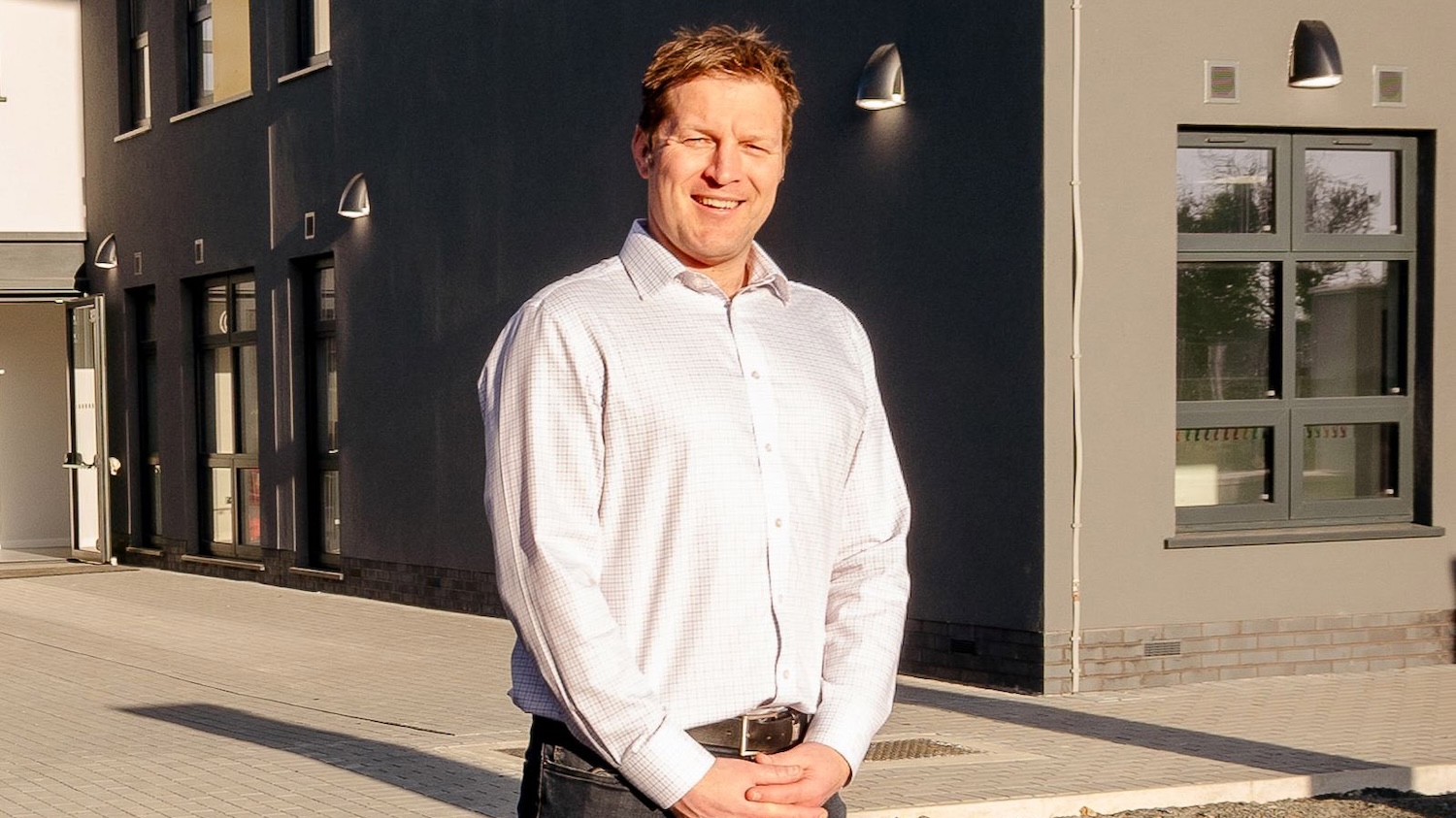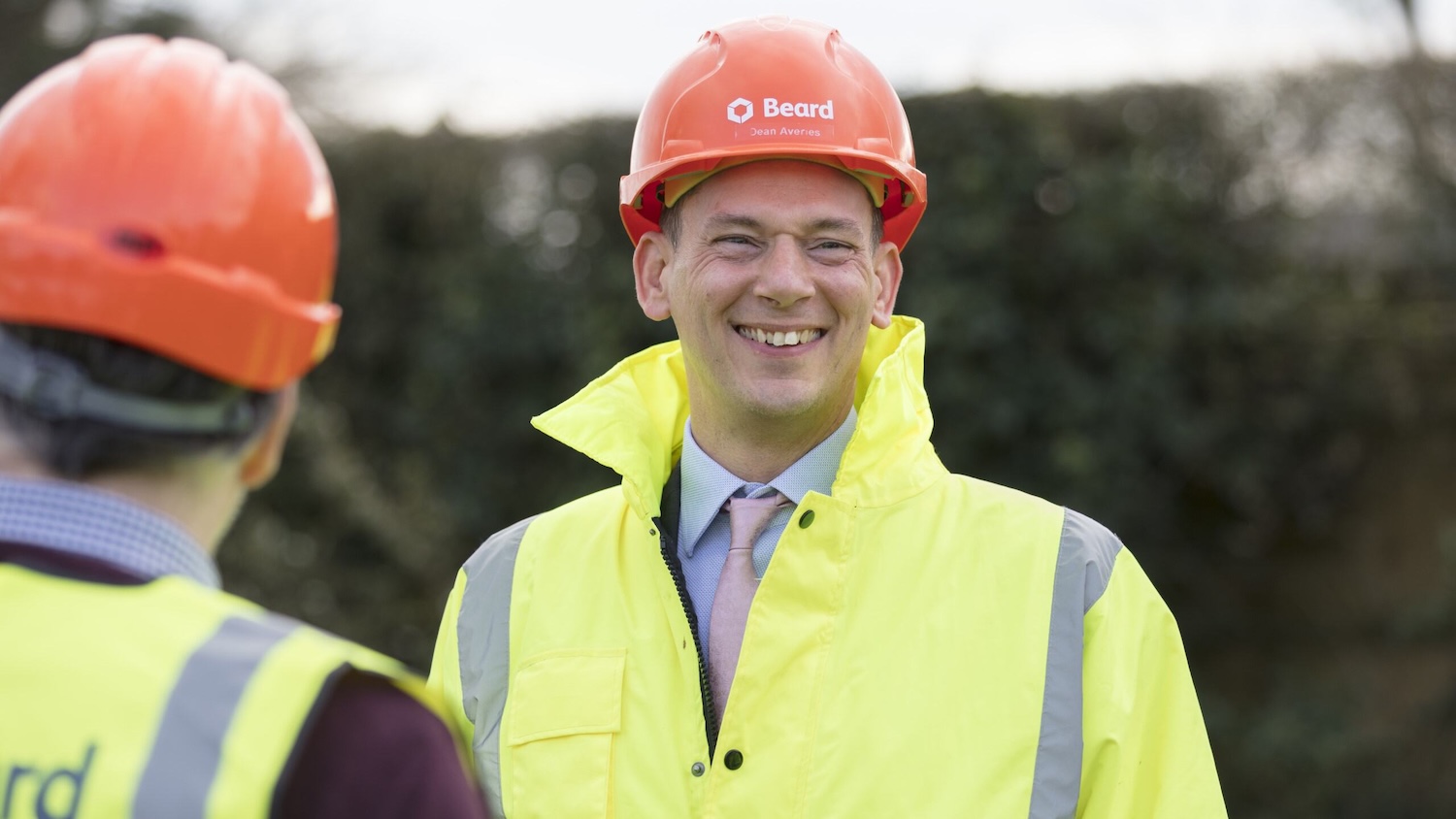
Attracting the workforce of the future
Engaging the next generation of talent will require a reimagining of how construction is promoted to young people
As the built environment industry continues to struggle with skills shortages, a key solution lies in looking to the next generation.
This generation, however, is often unaware of the opportunities in the sector, resulting in a lack of students taking related courses at university level.
Tim Jones MCIOB, principal lecturer at Sheffield Hallam University’s Department of the Natural and Built Environment, identifies “a decline in the number of students coming into higher education to study built environment courses over the years”.
He adds: “When I first started 16 years ago, we had between 350 and 450 students. Now it’s a lecture theatre that holds 90 people and they all fit in.
Changing perceptions
Changes in apprenticeship approaches have, in part, had an impact, with some students now undertaking degree apprenticeships as a different route into the sector.
However, scope remains to increase the uptake of university places. There is also work to be done to change perceptions of the industry and improve the public’s understanding of the varied careers opportunities available in construction.
“There is a huge lack of understanding,” Jones says. “If you said to your average person ‘what does a building surveyor do?’, most people don’t know. ‘What does a construction manager do?’ Most people don’t know.”

I think there needs to be a reimagining as to how we promote the industry. We have a fantastic opportunity at school level to bring people’s attention to the opportunities the industry can offer
Sean Flynn MCIOB, founding head of the School of the Built Environment at London Metropolitan University, which will welcome its first students in September, agrees that there is “a general lack of awareness about what the industry can offer young people”.
He adds: “I think part of the challenge is how wide ranging it is, from trades to technicians to professions to offshoots, in terms of marketing and HR. The reality is a career in construction can offer some incredibly diverse career paths.”
Tackling misinformation
Similarly, Alison Watson, founder and chief executive of built environment education social enterprise Class Of Your Own (COYO), says: “There’s still a lot of misinformation about the construction industry” and a lack of awareness of the “breadth of professions”.
Overall, Flynn believes that an important starting point is “how we badge the industry”.
He adds: “If we call it construction, it comes with so much baggage. My school is ‘built environment’ because that is what we create.
“I think there needs to be a reimagining as to how we promote the industry. We have a fantastic opportunity at school level to bring people’s attention to the opportunities the industry can offer.”
According to Flynn, a built environment career can take young people into areas that are perceived as “newer and more dynamic” – digital, big data, environmental science and sustainability.
“If we raised awareness about this, then I am sure we would find people more open to considering careers within our industry,” he says.
Promotion in schools
With the majority of new students now entering the industry due to a family connection, rather than from careers advice, according to Jones, more needs to be done to improve promotion in schools.
Engaging with the next generation from primary school age could make a real difference, he says, adding: “We’re often only really interested in talking to year 12 and year 13 students, when really we should have a much longer game with this.”
Flynn has ideas on what school promotion should look like. He says: “Industry needs to offer opportunities that raise awareness and give school leavers the opportunity to see what a construction site or design office looks like.”
This could be achieved through live casting and bringing sites into the classroom; for example, a drone surveying a historic building.
This will be a similar approach to the coursework and assessment briefs Flynn is planning for the London Met course, which will be based on real and occasionally live sites.
Capitalising on tech
Jones also identifies scope to emphasise the industry’s technology side to school children and young adults.
“There is an opportunity for people who have grown up as gamers to get into the construction industry with all the tech that’s out there,” he says.

T Levels should be great, but it’s clear they’ve been rolled out with little consideration for the people who will teach the next generation
Looking ahead, young people need positive role models they can identify with “better than someone who looks like their dad or their granddad”, according to Jones.
He highlights good work being done by professional bodies such as Women into Construction. “We need to make the industry more accessible to minority groups,” he says.
Flynn agrees that there is a need for more role models for currently underrepresented groups, such as women or ethnic minorities.
There is also potential to identify influencers on social media who younger people can relate to.
“Let’s get the early careers people and leverage social media to get the message out there,” he says. “Employers could identify people who could be those influencers and role models in their organisations.”
Options for students
Alongside these challenges are intricacies in pupils’ subject choices toward the end of their school careers.
At the age of 16 in England, there is a choice between taking A Levels, other Level 3 qualifications or T Levels.
T Levels are full-time courses that merge industry with education, taught largely in further education colleges. While in theory they seem a good option, Watson stresses that Construction T Levels are not always recognised by universities.
She explains: “Those who choose Construction T Levels instead of A Levels with the ambition to access a traditional university degree need to proceed with a degree of caution – not all universities accept them.”
COYO has supported training for T Levels taught in sixth forms and colleges, where teachers and tutors have previously delivered traditional academic subjects or trade and craft courses.
T Level approach
The first year of the T Level is a core year covering, for example, measurements, sustainability and technology. But according to Watson, this means a brickwork tutor can “suddenly be teaching digital skills and topographical surveying, which can be very unfamiliar territory”.
She adds: “We’ve talked to tutors who are still very anxious about their own lack of knowledge.”
Watson says: “In principle, T Levels should be great, but it’s clear they’ve been rolled out with little consideration for the people who will teach the next generation.”
Some colleges do not have the expertise in-house and rely on local support – for example, from surveyors or technology providers – to deliver certain T Level elements.
“It needs investment to make it work,” Watson adds. “Industry has worked with providers to put the curriculum together based on the knowledge and skills of the modern workforce, but colleges struggle to recruit. Teaching salaries are unattractive to industry professionals.”

There is an opportunity for people who have grown up as gamers to get into the construction industry with all the tech that’s out there
DEC route
Another option that school students can consider is the Design, Engineer, Construct! (DEC) learning programme, created by COYO and taught by teachers in secondary schools.
Design and technology teachers predominantly deliver DEC and undertake COYO’s training programme to do so.
The DEC programme includes an approved Level 3 qualification with full UCAS points, which is welcomed by “a plethora” of universities alongside two A Levels. It also enables access to a wide range of professionally oriented apprenticeships.
“We have so many phenomenal teachers, so our children, many of whom start DEC well before they make GCSE choices, access some great opportunities,” Watson says.
“We’ve massively seen the benefits. Employers know that DEC students have more than just good grades. They recruit directly from our schools knowing [students] are work-ready.”
Big picture thinking
According to Flynn, it is important to show potential students the bigger picture and join the dots between climate change, net zero and the built environment.
“That’s a really big initiative,” he says. “We try to capture their attention by showing them that by joining the industry they can be part of this solution.
“Take them out, talk to them about their surroundings. It’s a chance to hit our net zero targets and provide a built environment that’s fit for future generations and future purpose.”
Watson adds: “Children are told they’re studying for careers that don’t even exist yet. Consider that by 2050, nearly two thirds of the global population are predicted to live in cities.
“By 2030, we’re aiming to be a net zero industry. Who is going to deliver such transformation with an ageing workforce?
“Children may not know the names of the careers of the future, but one thing is guaranteed: there’s a good chance the key sector will be the built environment.”
Without tackling the existing skills shortages, Flynn believes the industry will “struggle” to improve infrastructure and hit net zero and housebuilding targets.
However, he adds that the sector is “part of the solution” and can “go into schools and raise this awareness”.
According to Flynn, engaging the next generation will mean a more “vibrant, diverse, dynamic, people-centred industry”, which will also be more attractive to potential recruits.
He adds: “This needs a coordinated approach across the industry. Professional bodies have got to come together to solve this challenge around skills shortages. We need the industry as a whole to move forward.”
Comments
Comments are closed.








What about thinking about the work-life balance element. In construction we work the workers too hard in terms of hours. Early starts with late finishes make for extremely poor output in terms of productivity. Psychologically the workforce are tired and disillusioned. The UK construction industry is bottom of the table in terms of productivity across other European countries. Incentivise the workers with shorter hours with less breaks. Get in and get gone – Saturday morning ‘job and knock’ type approach during the week. It would require a step up in management to plan and organise the work. If the Client isn’t content with early finishes then move to a two shift system. Less hours for the worker but more productivity for the client and business seems a no brained to me. Sadly, nowhere in this article or the Government’s strategy for the future is the workforce incentive to work addressed.